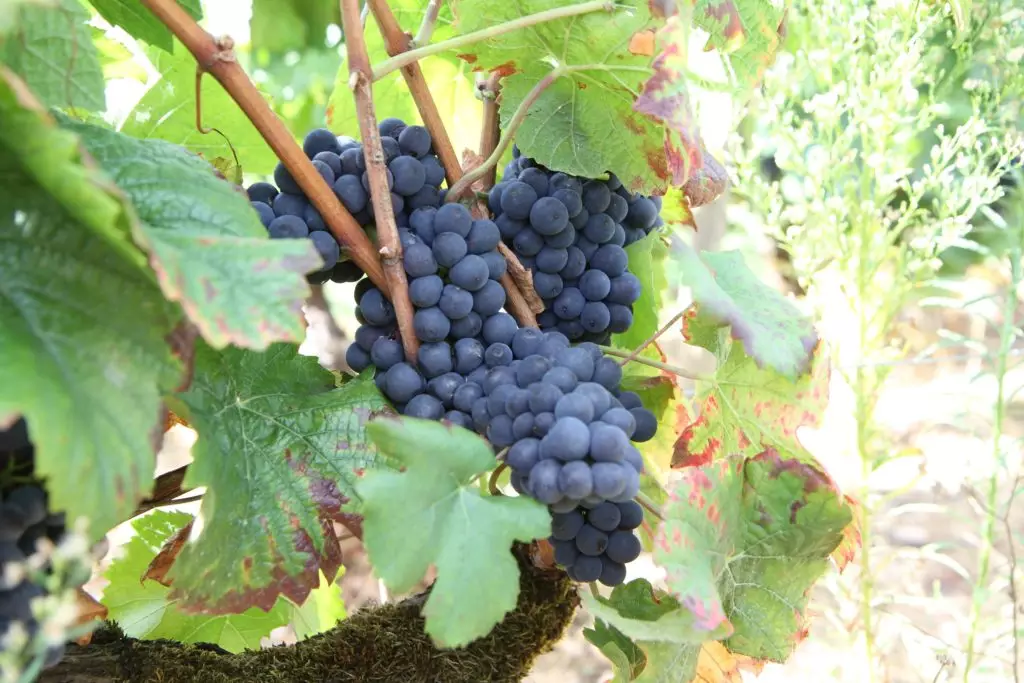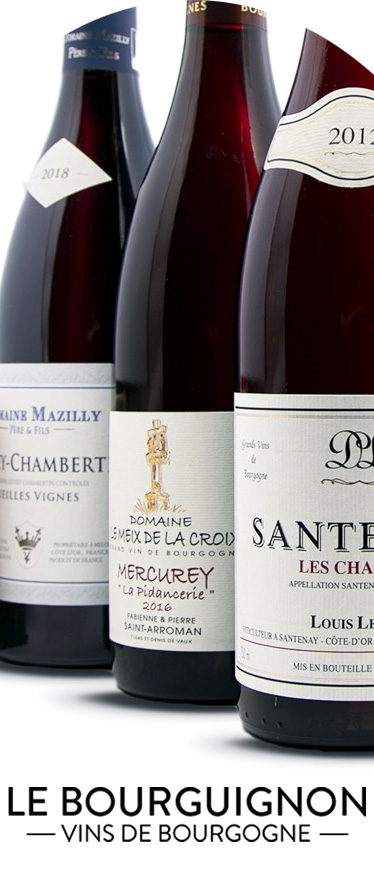Burgundy is famous for its two king grape varieties: pinot noir and chardonnay. The first, 40% of the vineyard, produces elegant and aromatic reds. It is the historic grape variety of Burgundy, and it is difficult to like further south. Pinot Noir is renowned for its aromas of cherry, blackcurrant and even violet.
Chardonnay – 51% of the Burgundy vineyard – is planted all over the world, but particularly likes Burgundy, where it originates. We speak of a “plastic” or “chameleon” grape variety: it gives very different expressions depending on the terroir and the vintage. Overall, its aromatic palette is wide: white, yellow or exotic fruits, white flowers, honey, butter… It is its coated side that often makes its signature.
Aligoté (6% of the vineyard) and Gamay (2.5%) are also among the great Burgundy grape varieties.
Together, these four varieties therefore represent 99% of the Burgundy vineyard. What are the remaining 1%? Very often forgotten grape varieties, which made the glory of Burgundy of yesteryear.
Pinot blanc: a “discolored” cousin of pinot noir, originally from Burgundy and very widespread for a time. Long confused with Chardonnay, it was supplanted by the latter following the phylloxera crisis. But it still exists in many Côte d’Or vines, and is part of the blend of great whites as a minority grape variety. More fragile than Chardonnay, but also lighter and more floral, it brings its typicality to these cuvées.
Pinot Beurot (Pinot Gris): A forgotten grape variety from Burgundy. Its name would come from the bure of the Cistercian monks who cultivated it. This mutation of pinot noir, with a more bland color, is still a reference today in the most northern part of Burgundy: the Jovinien, where it is made into “gray wine”. Pinot Beurot is also present in the Côte d’Or, where it sprinkles certain vines with whites. Its minority presence in blends gives fatness and complexity to Chardonnay cuvées, such as the famous Clos Blanc de Vougeot. Today it is one of the great grape varieties of Alsace.
Sauvignon: No need to introduce this star variety from the Loire and Bordeaux regions. What is less known is that he produces all the wines in a village in Burgundy: Saint-Bris, south of Chablis. The only 100% Sauvignon appellation in the region. The cuvées are fresh, tense and aromatic, like the wines of the Loire.
Le César: It is used in the blend of wines from Irancy, south of Chablis. Its power brings structure and length in the mouth to the Pinot Noir cuvées. This is a very old variety brought by the Roman legions to Gaul, hence its name. It is said to be a cross between Pinot Noir and Argent, an old grape variety from Spain.
Sacy: this is the grape variety of the Saint-Pourçain appellation, in Auvergne. But it is still found – exceptionally – in northern Burgundy. This cross between pinot noir and gouais (just like chardonnay!) gives light and fresh cuvées.
Melon: Another forgotten grape variety! The Burgundy melon comes, as its name suggests, from the Burgundy vineyard. It has long since migrated to the Nantes region, where it produces the famous Muscadet. The melon is now almost impossible to find in the kingdom of Pinot Noir and Chardonnay, except in a few rare areas of Chablis, or in IGP.


